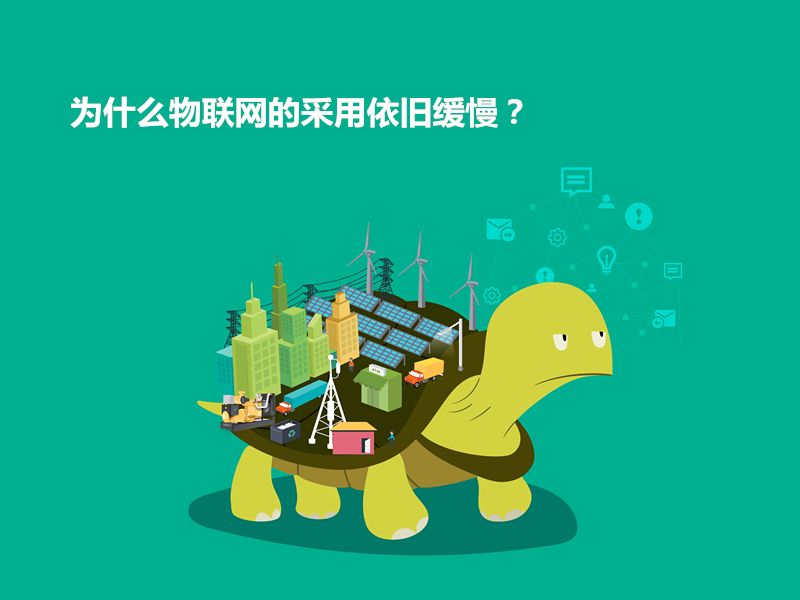As the scale and influence of the Internet of Things continues to expand, it is expected that the number of connected devices will also proliferate, and the entire world is involved in the hype of the Internet of Things. Many companies, regardless of their main business, are trying to capitalize on the innovation potential of the Internet of Things to increase revenue and capture the largest market share. Although the company expects to rely on the Internet of Things to change and is implementing the Internet of Things, many obstacles in the implementation process are often overlooked. Therefore, most IoT projects are difficult to meet customer requirements during implementation. The deployment of the Internet of Things is not as easy as it might seem. Data privacy and security issues, high implementation costs, inadequate infrastructure, lack of familiar professionals, lack of standards, and interoperability are all reasons for the slow adoption of the Internet of Things. Almost no one has noticed these problems. If these problems are solved, the IoT will be adopted faster and more successfully, which will bring long-term benefits to the enterprise.
Copper substrate is the most expensive metal substrate, and its thermal conductivity is many times better than that of aluminum substrate and iron substrate. It is suitable for high-frequency circuits, areas with large changes in high and low temperature, and the heat dissipation and architectural decoration industries of precision communication equipment. The copper substrate circuit layer has great current carrying capacity and thermal aging resistance.
Heavy Copper PCB,Board Metal Substrate,Copper Substrate,Thermal Conductivity of Copper Board,Aluminum PCB Thermal Conductivity Huizhou Liandajin Electronic Co., Ltd , https://www.ldjpcb.com
Edge computing is a problem Most IoT projects fail to progress to the POC (Proof of Concept) phase for the following reasons: ◆ Difficulties in obtaining data seamlessly from sensors ◆ No local decision making and integration capabilities ◆ Lack of multi-device and multi-protocol compatibility ◆ Not forward-looking—As the future grows, it's easy to get out of date. The IoT will generate a lot of sensor data including metrics and metrics, diagnostics, and transactions. How to centralize and generate value is always a problem. This challenge involves data integration, storage, processing, and security issues. Edge computing plays an important role here, where data within the valid range may be ignored or stored on lower cost storage devices, and data outside the standard range may trigger an alert and be pushed to the platform for further analysis. Because hardware providers or IoT implementers are responsible for data collection and building their own gateway agents, edge computing needs to target different sensor protocols, which is an unresolved issue. Once the data is pushed, the platform provider is ready to report and analyze, and the data does not make any sense in the end-to-end IoT. Solving this problem will make it easier to develop and deploy IoT applications. All you need is an advanced gateway proxy that allows you to preprocess or filter your data with a rich set of protocols and use appropriate algorithms to examine extreme data. In addition, the application server should be able to process the data, which is acknowledged by the application server and then streamed, rather than transmitting all of the data back to the data center.
Step by Step We often see platform/software vendors presenting colorful widgets, charts and visual creative interfaces to their customers. However, what customers want is a solution that will make the IoT project a success, and it should show clear impact and tangible return on investment to end customers, rather than just showing some cool features. There are currently few IoT platforms designed to easily build/customize to solve customer problems.
Handing everything over to the platform vendor To solve this problem, IoT OEMs (sensor and gateway manufacturers) can work closely with software vendors (IoT platform providers) and leverage vendor software advantages instead of building them separately Software, which will greatly affect the time and labor input of the Internet of Things. Many years ago, the telecommunications industry adopted this cooperation model. In the financial sector, the current trend is for banks to cooperate with financial technology software companies. This strategic alliance will speed time to market, be easy to implement, run smoothly, and receive the most support. This integration will also help to increase customer satisfaction, why? Typically, OEMs provide end users with terms of the agreement to develop applications or provide solutions, and are only compatible with their own hardware devices. Therefore, if customers want to manage OEM equipment distributed in different regions and different manufacturers, they will face difficulties in data collection and understanding. Using an IoT platform with extensive technical expertise can be compatible with multi-vendor IoT devices, perhaps the only good way to solve this problem. 
February 08, 2023